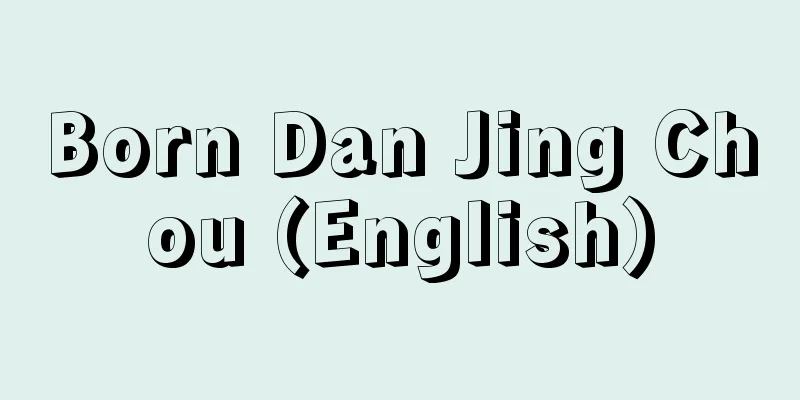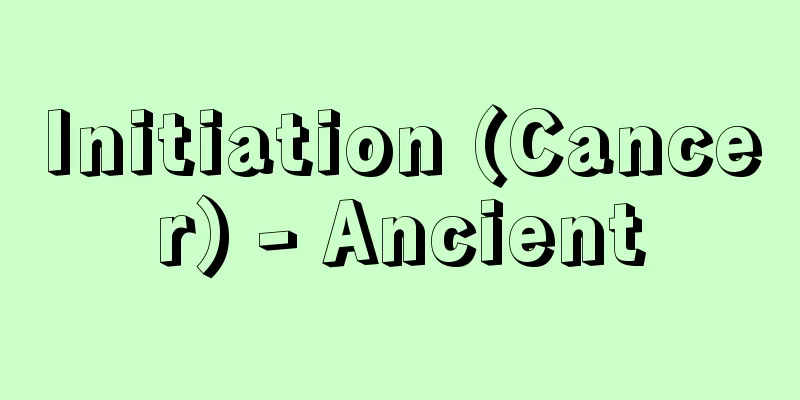Hokkaido Former Aborigines Protection Law - Hokkaido Former Aborigines Protection Law

|
The Basic Law on Ainu Policy was enacted in 1899 (Meiji 32). The characteristic of modern Japan's Ainu policy can be defined as an assimilation policy that internalized a double discriminatory structure of forcing Ainu to become "Japanese" and excluding them from "Japanese" society. This law symbolized this and had a great impact on Ainu life and culture. The law is composed of 13 articles, and its main purpose is to train Ainu to be "pioneer farmers" through the provision of land to Ainu, encouraging agriculture, and spreading primary education, and to provide them with an education to become "Japanese". The basic philosophy is based on the imperial ideology of "equal treatment of all," which is nothing more than a legal fiction of assimilationism. Among them, the "former aborigine" elementary school was a separate educational institution for Ainu children that was established based on the legal basis of Article 9, "In places where former aborigine villages were established in Hokkaido, elementary schools may be established at the expense of the national treasury," and played a central role in assimilation not only for Ainu children but also for the entire Ainu kotan. Twenty-three such schools were established throughout Hokkaido, but the education provided there was extremely discriminatory, with content taught in the first three years of primary school being extended to four years on the assumption that Ainu children were "capable of learning," and the Ainu language and culture were not included in the curriculum. The law, which used the discriminatory term "former aborigines," was revised five times along with the "assimilation" of the Ainu. However, in May 1984, the Hokkaido Utari Association, which was concerned with the existence of the law, put together a draft "Law Concerning the Ainu People" (draft) that would repeal the existing law and replace it with a new law that included provisions to guarantee the rights of the Ainu people. This was approved at a general meeting of the association, and the draft was submitted to the Utari Issues Forum, a private advisory body to the Hokkaido Governor, and the Hokkaido Prefectural Assembly's Standing Committee on Welfare, where the contents were discussed. In addition, in response to protests from the Ainu people against Prime Minister Nakasone's "monoethnic nation statement" in October 1986, which denied the existence of the Ainu people, the Diet continued to deliberate a bill to amend the law, the main focus of which was to change its name, and the government promised to review the law. In February 1994, a project team for the enactment of a new Ainu law was formed within the ruling coalition, and in July of the same year, Kayano Shigeru became the first Ainu member of the Diet (House of Councillors), and work was underway to repeal the pending issue of the Hokkaido Former Aborigines Protection Law and enact the New Ainu Law. On May 8, 1997, the New Ainu Law, officially titled the Law Concerning the Promotion of Ainu Culture and the Dissemination and Awareness-raising of Knowledge Concerning Ainu Traditions, etc. (abbreviated as the Ainu Culture Promotion Law), was passed by the Diet and came into effect on July 1 of the same year, resulting in the abolition of the Hokkaido Former Aborigines Protection Law. [Yukiro Takegahara] [References] | |Source: Shogakukan Encyclopedia Nipponica About Encyclopedia Nipponica Information | Legend |
|
1899年(明治32)に制定されたアイヌ政策に関する基本法。近代日本のアイヌ政策の特質は、アイヌの「日本人」化の強制と「日本人」社会からの排除という二重の差別構造を内在化した同化政策と規定できる。同法はそれを象徴するもので、アイヌの生活・文化に大きな影響を与えた。同法は13条から構成され、アイヌへの土地給与、農耕の奨励と初等教育の普及を通してアイヌを「開拓農民」に仕立てあげ、かつ「日本人」になるための教育を受けさせることを主目的としている。その基本理念は、同化主義の法的フィクションにすぎない「一視同仁」の天皇制思想に基づいていた。なかでも、「旧土人」小学校は、その第9条「北海道旧土人ノ部落ヲ為(な)シタル場所ニハ国庫ノ費用ヲ以(もっ)テ小学校ヲ設クルコトヲ得」を法的根拠として設立されたアイヌ児童の分離教育機関で、児童のみならず、アイヌ・コタン全体の同化中枢的機能を果たした。同小学校は全道に23校が設立されたが、そこでの教育の実態は、尋常小学3か年で学ぶ程度の内容をアイヌ児童の「能力の遅れ」を前提に4か年としたり、あるいはアイヌ語・アイヌ文化を教科目に取り入れなかったり、きわめて差別的な色彩が濃いものであった。「旧土人」という差別的呼称を冠した同法は、アイヌの「同化」とともに五度にわたる改正を経た。しかし、その存廃をめぐって北海道ウタリ協会は、1984年(昭和59)5月、現行法を撤廃し、それにかわる新法の素案としてアイヌ民族の権利保障を盛り込んだ「アイヌ民族に関する法律」(案)をまとめ、同協会総会で承認を得、北海道知事の私的諮問機関であるウタリ問題懇話会および北海道議会厚生常任委員会にそれぞれ付託され、その内容が審議された。 また、国会では、1986年10月の中曽根(なかそね)首相のアイヌ民族の存在を否定する「単一民族国家発言」に対する当事者からの抗議を機に、同法の名称変更を骨子とする改正案を継続審議し、政府は同法の見直しを約束した。 1994年(平成6)2月には、連立与党に「アイヌ新法」制定のためのプロジェクト・チームがつくられ、同年7月、萱野(かやの)茂がアイヌ民族として初の国会議員(参議院議員)となり、懸案だった「北海道旧土人保護法」の廃止と「アイヌ新法」の立法化に向けての作業が進められた。97年5月8日、「アイヌ新法」正式名称は「アイヌ文化の振興並びにアイヌの伝統等に関する知識の普及及び啓発に関する法律」(略称、「アイヌ文化振興法」)が、国会で成立、同年7月1日に施行され、これに伴い「北海道旧土人保護法」は廃止された。 [竹ヶ原幸朗] [参照項目] | |出典 小学館 日本大百科全書(ニッポニカ)日本大百科全書(ニッポニカ)について 情報 | 凡例 |
<<: Hokkaido Transverse Expressway - Hokkaido Transverse Expressway
>>: Hokkaido Development - Hokkaido Development
Recommend
Courant d'Italie et d'Armagne (English: Courant d'Italie et d'Armagne)
...However, after the Second World War, thanks to...
Collaborative work - Collaborative work
… Two or more people may create a work together. ...
Direct mail
It is translated as direct mail advertising and is...
Production index
An index based on a standard value that makes it ...
《River Enchanter》
… Fishing continued to grow in popularity, reachi...
Sotetsu
A Chinese politician and man of letters from the ...
Accounting - Kaikei (English spelling) accounting
It refers to a system or act of recording, calcul...
Sotherby's
…In the 17th century, art dealers flourished in P...
Tachibana - Kissei
…Also, in the Shenxian Biography, the Han Dynasty...
Lysogens
A bacterium infected with a non-replicative bacter...
counsel de guerre (English spelling) counsel de guerre
… In Japan, in 1872 (Meiji 5), a bureau of the Mi...
mahat
…This transformation is called “unfolding” (pariṇ...
Cabracan (English spelling)
…(2) Legends of giants as violent ancient gods wh...
Mind-body problem - shinshinmondai (English spelling) mind-body problem English
How the mind and body are connected within humans...
Kanada Castle
A 7th century Korean-style mountain castle built o...









